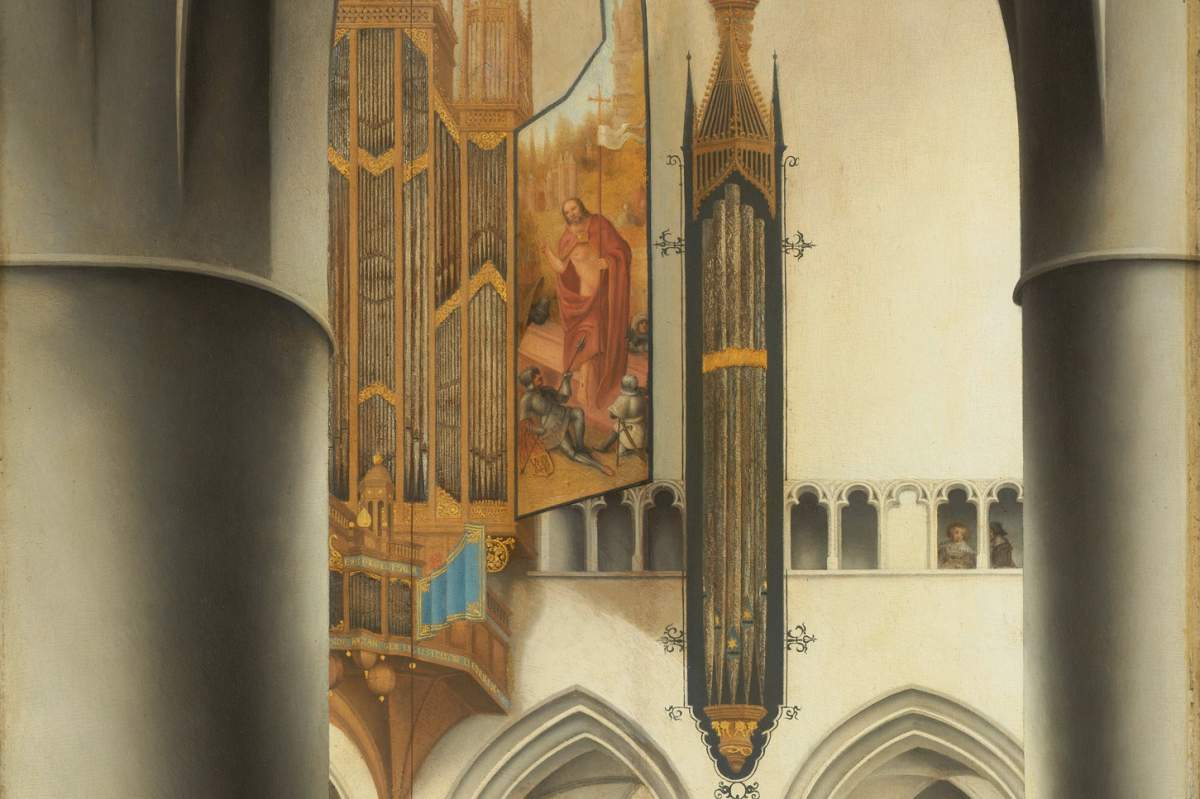
A “swallow’s nest organ” is a kind of pipe organ that-as you may guess from its name-bears some resemblance to a bird’s nest. Prominent in Medieval and Renaissance churches, swallow’s nest organs perched high above their congregations suspended from a platform built into the church wall. The player crawled up to the organ’s tiny casement by means of a ladder or a (usually concealed) staircase.
A Modern Revival
As organs grew in size and scope and function, gallery organs became far more prevalent than their smaller counterparts. But there has been a modern revival of swallow’s nest organs, such as the one installed in 1997 at the Duke University Chapel in Durham, North Carolina. In Leipzig, Germany, the Foundation for the University Church of St. Paul has in recent years been raising money to install their own late-Gothic and Renaissance swallow’s nest organ and have thus far, managed to complete phase one of the new organ’s construction. A second phase that will add more stops is still in the works as funds are pending.
This newly constructed organ was installed as a replacement for the original St. Paul’s organ that was dismantled in the 18th century. That organ’s specifications were described in 1619 by the writer and composer Michael Praetorius in the second volume of his Syntagma Musicum. While the new organ is not a replica of the original, it does rely extensively on Praetorius’ 17th century descriptions as a model.
The Historic St. Paul's Church
The place where this newly built Renaissance style organ is housed is called the Paulinum, formerly St. Paul’s Church—a building and institution with centuries of history…and one big interruption.
Construction on St. Paul’s church was begun in 1229. A few hundred years later, Bach performed festal services at the church between the years 1723 and 1725, and in 1729, there premiered his cantata 'Der Geist hilft unsrer Schwachheit auf.' In the 19th century, Felix Mendelssohn conducted his St. Paul oratorio at the church in 1837 and 10 years after that, the church hosted Mendelssohn’s funeral in 1847. St. Paul’s got a facelift early in the 20th century with extensive restorations, only to be completely demolished by the communist East German government in 1968.
St. Paul’s reincarnation began in 2007 when it was rebuilt as a dual use space for the University of Leipzig. New buildings with modern classrooms and meeting facilities inspired by gothic architecture also include a space for religious services built exactly over the original site.
Daniel Beilschmidt - Fortuna desperata: Gothic & Renaissance Organ Music
Music in this space can be heard on a new CD from the GENUIN label that features works from the 14th – 16th centuries played by Daniel Beilschmidt on the swallow’s nest organ installed by the Swiss firm, Metzler.
Included is an Ars Nova motet intabulation from a very early source for organ music, the Robertsbridge Codex. Besides the Robertsbridge Codex, several tracks on this CD are sourced from the Buxheim organ book—a large collection of early German organ music in tablature that was written down sometime around 1470. There are also five Praeambula from the tablature of Adam Ileborgh of Stendal as well as Daniel Beilschmidt's own impressive four-part organ intabulation of the Sanctus from Guillaume de Machaut’s mid-14th century Messe de Nostre Dame. In various tracks, Beilschmidt is joined by singer Christine Mothes as well as Veit Heller who accompanies with various bells, bell wheels, and chimes. The three perform a Kyrie from the Faenza Codex with virtuosic diminutions from the organ.
Fortuna Desperata
The recording is titled Fortuna Desperata and it takes its name after a very popular Renaissance tune on which composers wrote settings for various ensembles, secular cantus firmus pieces, liturgical works, and a myriad of others. Settings of Fortuna Desperata by both Buchner and Kleber appear on this CD, along with Agricola’s six part version from the 14th century—intabulated, or adapted, to the organ with dual pedal.









